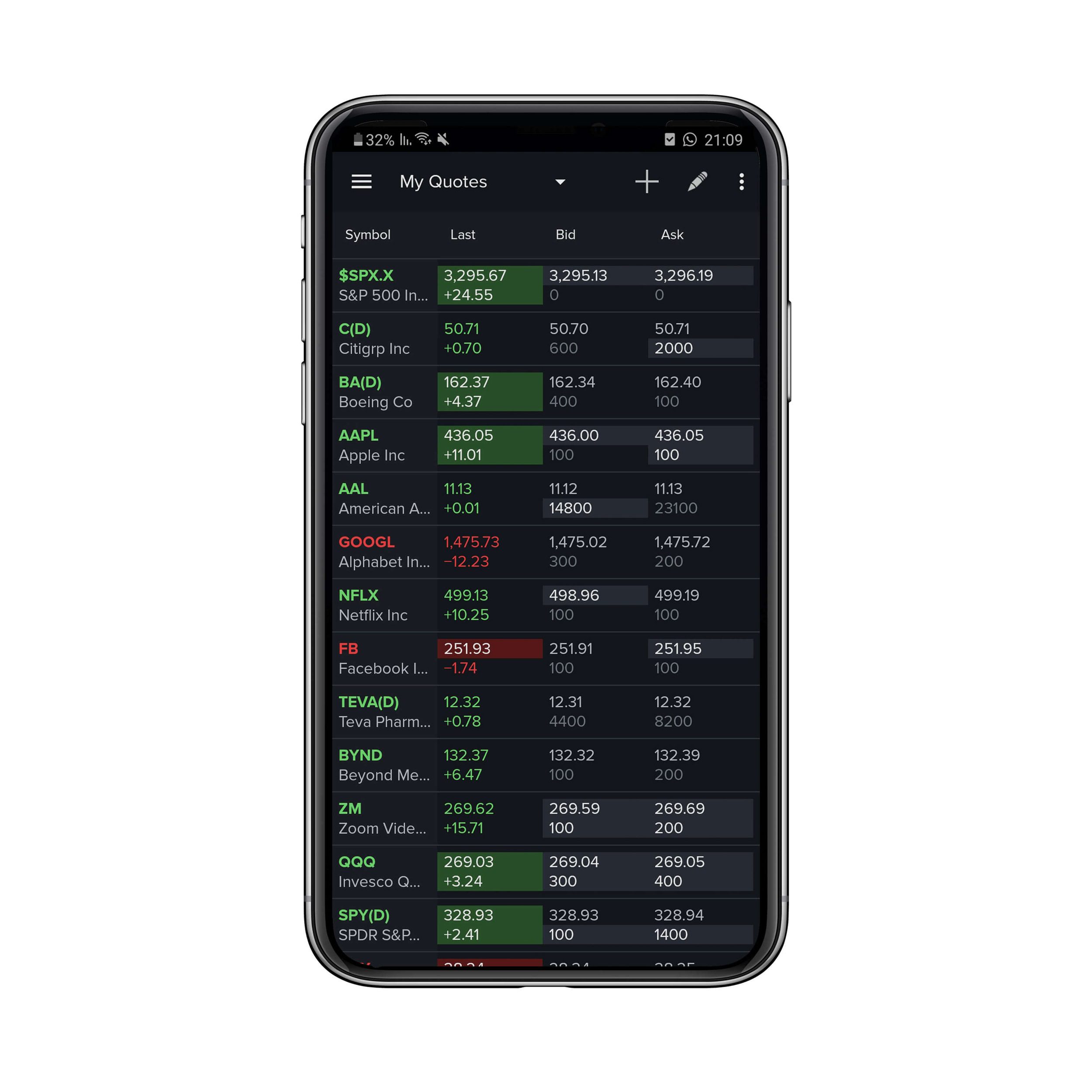

Finance
What Does It Mean When Stocks Vest
Published: January 17, 2024
Discover the meaning of vesting stocks and its significance in the world of finance. Gain insights into the process and implications for investors.
(Many of the links in this article redirect to a specific reviewed product. Your purchase of these products through affiliate links helps to generate commission for LiveWell, at no extra cost. Learn more)
Table of Contents
Introduction
Welcome to the exciting world of stock market investing! If you’re new to this realm, you may have come across the term “vesting” and wondered what it means. Understanding vesting is crucial for any investor, as it can significantly impact your financial decisions and ultimately determine your level of ownership in a company.
Vesting is a concept used not only in the stock market but also in various other financial and employment contexts. However, in this article, we will focus specifically on how vesting relates to stocks.
When you invest in stocks, you’re essentially buying a share of ownership in a company. However, not all stocks come with immediate ownership rights. That’s where vesting comes into play.
Vesting refers to a process by which certain restrictions and conditions are placed on the ownership of stocks, limiting the ability to sell or transfer them. These restrictions are typically lifted gradually over a specific period of time, as specified by the vesting agreement, resulting in the investor gaining full ownership of the stocks.
Understanding the concept of vesting is crucial for investors, as it affects their financial decisions and long-term investment strategies. By understanding when and how their stocks will vest, investors can plan accordingly and make informed choices that align with their financial goals.
In the next sections, we will delve deeper into the types of vesting, its significance, factors that can impact vesting, and the tax implications associated with vested stocks. We will also explore how to calculate vesting and discuss the differences between vesting and immediate stock ownership. Through a comprehensive understanding of vesting, you’ll be better equipped to navigate the complexities of the stock market and make sound investment decisions. So, let’s dive in!
Definition of Vesting
Vesting, in the context of stocks, refers to the process of earning full ownership rights or control over investments, shares, or stock options. When an investor purchases stocks, they may not have immediate and unrestricted access to them. Instead, the ownership rights are subjected to certain conditions and restrictions, which are gradually lifted over a predetermined period, known as the vesting period.
The vesting process is typically governed by a formal agreement between the investor and the company, known as the vesting agreement. This agreement lays out the specific terms and conditions of the vesting schedule, including the duration of the vesting period, the percentage of stocks that will vest over time, and any performance milestones that need to be met. Once the vesting period is complete, the investor gains full ownership and control over the stocks.
For example, let’s say you work for a technology company that offers stock options as part of their compensation package. The company may have a vesting schedule that spans over four years, with 25% of the stock options vesting after the first year, and the remaining 75% vesting on a monthly or quarterly basis over the next three years. This means that, at the end of the first year, you will have ownership rights to 25% of the stock options, and by the end of the fourth year, you will have full ownership.
It’s important to note that during the vesting period, an investor may not have the ability to sell, transfer, or exercise their ownership rights on the stocks. However, they may still receive dividends or other benefits associated with the stocks, depending on the terms outlined in the vesting agreement.
Vesting is commonly used as a mechanism to incentivize employees or align the interests of shareholders and company executives. By tying ownership rights to specific conditions or performance milestones, it encourages loyalty, long-term commitment, and alignment of interests between the company and its stakeholders.
In the next sections, we will explore different types of vesting, its significance in the stock market, and the factors that can affect the vesting process. By gaining a deeper understanding of vesting, you’ll be better equipped to navigate the complexities of the stock market and make informed investment decisions.
Types of Vesting
Vesting can take several forms, depending on the specific circumstances and agreements involved. Let’s take a look at some common types of vesting:
- Time-based Vesting: This is the most common type of vesting, where ownership rights gradually accumulate over a specific period of time. For example, the vesting schedule may specify that 25% of the stocks will vest each year for a total of four years, resulting in full ownership at the end of the vesting period.
- Cliff Vesting: Unlike time-based vesting, cliff vesting involves a waiting period before any shares vest. Once the waiting period is over, a large percentage of shares vests all at once. For instance, a company may have a cliff vesting period of one year, after which 100% of the shares become vested.
- Performance-based Vesting: In performance-based vesting, ownership rights are tied to certain performance milestones or goals that need to be achieved. This type of vesting is often used to incentivize employees and align their interests with the company’s success. If the performance goals are met, the shares will vest accordingly.
- Reverse Vesting: Reverse vesting is a unique concept often used in startup companies and ventures. In reverse vesting, the ownership rights initially belong to the company or another party, such as an investor or a founder. Over time, as the individual continues to contribute to the company or fulfill certain obligations, the ownership rights gradually transfer to them.
- Restricted Stock Units (RSUs): RSUs are a popular form of equity compensation granted to employees. With RSUs, the shares are not transferred immediately upon issuance. Instead, they vest over time based on a predefined schedule. Once the RSUs vest, the employee receives the shares as regular stocks.
- Stock Options: Stock options give the holder the right to purchase shares at a predetermined price (the exercise price) within a specified period. However, stock options usually have a vesting schedule, where the options become exercisable over time. Once vested, the holder can choose to exercise the options and purchase the shares.
It’s important to note that these are just some common types of vesting, and the specifics can vary depending on the company and the individual agreements in place. Understanding the type of vesting associated with your stocks or stock options can help you plan your investment strategy accordingly and make informed decisions.
In the next section, we will explore the significance of vesting in the stock market and why it matters for investors.
Vesting in Stock Market
Vesting plays a significant role in the stock market, particularly when it comes to company stock options, restricted stock units (RSUs), and other forms of equity compensation. It serves as a mechanism to align the interests of employees, executives, and shareholders with the long-term success of the company.
One of the main reasons vesting is used in the stock market is to incentivize employees and encourage them to stay with the company for a certain period. By offering ownership rights that gradually vest over time, companies aim to retain talent, foster loyalty, and motivate employees to contribute to the growth and success of the organization.
Moreover, vesting also helps protect the company from immediate ownership transfers. Without vesting, employees or investors could acquire shares and quickly sell or transfer them, potentially destabilizing the company’s ownership structure. Vesting, with its gradual release of ownership rights, provides a level of stability and ensures that shareholders are committed to the long-term vision of the company.
Additionally, vesting in the stock market can be seen as a strategic decision by companies to manage the potential impact of employee turnover. By implementing vesting schedules, companies can mitigate the risk of employees leaving and taking their ownership rights with them. If an employee leaves before their shares have fully vested, they may forfeit a portion or all of their unvested shares, which can be reissued to other employees or retained by the company.
For investors, understanding vesting in the stock market is crucial for making informed investment decisions. When evaluating a company, investors may consider the vesting terms and schedules in place for employees and executives. A generous vesting structure can indicate a company’s confidence in its long-term prospects and its commitment to retaining key talent. On the other hand, excessive or poorly designed vesting structures could raise concerns about management’s focus on short-term gains rather than sustainable growth.
It’s also worth noting that the vesting of stocks can impact a company’s stock price. When a large number of shares vest and become available for sale, the increased supply can put downward pressure on the stock price. Conversely, if vesting results in a restricted supply of shares, it can create scarcity and potentially drive up the stock price.
Overall, vesting in the stock market serves as a mechanism for aligning the interests of employees, executives, and shareholders. By gradually releasing ownership rights, it incentivizes loyalty, fosters long-term commitment, and ensures stability in the company’s ownership structure. For investors, understanding vesting terms can provide insights into a company’s strategic decisions, employee retention practices, and ultimately, its potential for long-term growth.
In the next section, we will explore the importance of vesting and why it matters for investors and employees alike.
Importance of Vesting
Vesting is of paramount importance for both investors and employees in the stock market. It serves several crucial purposes that impact the financial well-being and long-term success of individuals and companies alike.
First and foremost, vesting provides a means to incentivize and reward employees. By offering ownership rights that gradually vest over time, companies can motivate their workforce to remain committed and loyal. Employees become more invested in the company’s success since their financial stake grows as the vesting period progresses. This alignment of interests can result in increased job satisfaction, productivity, and a stronger sense of ownership among employees.
Vesting also plays a vital role in employee retention. The gradual release of ownership rights creates an incentive for employees to stay with the company for the long term. If an employee were to leave before their shares fully vest, they may forfeit a portion of their ownership rights. This encourages employees to remain dedicated to the company and reduces the turnover rate, which can be costly for businesses in terms of recruitment, training, and lost institutional knowledge.
Furthermore, vesting is an effective way for companies to attract and retain top talent. Offering an equity-based compensation package tied to vesting schedules can be a compelling incentive for highly-skilled professionals to join a company. The potential for long-term financial growth, combined with the opportunity to share in the company’s success, can make the offer more enticing and competitive in the job market.
From an investor’s perspective, understanding the vesting terms and schedules of a company can provide valuable insights. Vesting can indicate the level of commitment and loyalty of key employees and executives. A well-designed vesting structure that aligns with the company’s long-term objectives can signal stability, strong leadership, and a focus on sustainable growth. On the other hand, frequent turnover or poorly structured vesting agreements could raise concerns about potential risks to the company’s future prospects.
For investors, vesting can impact stock prices and market dynamics. The release of a significant number of shares due to vesting can flood the market, leading to downward pressure on stock prices. Conversely, if vesting results in restricted supply, it can create scarcity and potentially drive up prices. Understanding the timing and potential impact of vesting can be crucial when making investment decisions and assessing the overall market sentiment.
Overall, vesting is important as it creates a mutually beneficial relationship for employees and companies in the stock market. It incentivizes employee loyalty, retention, and productivity while providing investors with valuable insights into a company’s stability and growth potential. By aligning the interests of all stakeholders, vesting contributes to the long-term success and financial well-being of both individuals and organizations.
In the next section, we will explore the factors that can affect the vesting process and its outcomes.
Factors Affecting Vesting
The vesting process is influenced by various factors that can impact the timeline and outcomes of the vesting agreements. Understanding these factors is crucial for both investors and employees involved in the stock market. Let’s take a closer look at some of the key factors that affect vesting:
Vesting Agreement: The terms and conditions outlined in the vesting agreement play a fundamental role in determining the vesting schedule. These agreements can vary from one company to another and may include specifics such as the duration of the vesting period, the percentage of shares that vest over time, and any performance criteria that need to be met for vesting to occur.
Employment Status: The employment status of an individual can have a significant impact on the vesting process. If an employee departs the company before the vesting period is complete, they may forfeit a portion or all of their unvested shares. However, some companies have provisions in place that allow vesting to continue even after an employee leaves, through mechanisms like extended vesting or accelerated vesting in certain circumstances.
Performance Milestones: In some cases, vesting may be tied to specific performance milestones or goals that need to be achieved by the individual or the company. These milestones can include financial targets, revenue growth, market share objectives, or other key performance indicators. Meeting these milestones can result in accelerated or additional vesting, while failure to reach them may delay or forfeit vesting.
Investor Influence: In situations where investors hold significant ownership stakes in a company, they may have an influence on the vesting process. Investors may negotiate certain requirements or milestones that need to be met for shares to vest, providing them with a degree of control over the company’s operations and strategic decisions.
Founders and Key Employees: Founders and key employees often have unique vesting arrangements that differ from standard employee agreements. These individuals may have a reverse vesting structure, where they initially hold all or most of the ownership rights, which gradually transfer to the company or other shareholders over time. This structure ensures that founders and key employees remain committed to the long-term success of the company.
Company Performance: The financial performance of the company can also impact the vesting process. If a company experiences financial difficulties or fails to meet certain performance targets, it may affect the vesting schedule. Companies may implement provisions that allow for accelerated vesting in the event of an acquisition or a change in control, ensuring that employees are compensated even if the company’s circumstances change.
It’s important for investors and employees to carefully review and understand the factors that can affect the vesting process. This knowledge allows individuals to make informed decisions about their investments, career paths, and future financial prospects. By considering these factors, both parties can navigate the vesting process effectively and evaluate the potential outcomes.
In the next section, we will explore the tax implications associated with vested stocks and how they can impact investors and employees.
Tax Implications of Vesting
When it comes to vested stocks, it’s important for both investors and employees to be aware of the tax implications that come with ownership rights becoming fully vested. The timing and nature of these tax obligations can vary depending on the jurisdiction and specific circumstances involved. Let’s take a closer look at the potential tax implications of vesting:
Ordinary Income: In many cases, when stocks or stock options vest, it is considered ordinary income and is subject to taxation at the individual’s ordinary income tax rate. The value of the vested stocks is typically included in the individual’s income for the year in which they become fully vested. It’s important to note that if taxes are not withheld at the time of vesting, individuals may be required to make estimated tax payments.
Capital Gains Tax: Depending on the holding period, any gains from the sale of vested stocks may be subject to capital gains tax. If the stocks are held for a certain period and then sold, the difference between the sale price and the original vesting value may be subject to either short-term or long-term capital gains tax rates, depending on the holding period.
Alternative Minimum Tax (AMT): In some cases, the vesting of stocks can trigger the Alternative Minimum Tax (AMT). The AMT is a separate tax system that ensures individuals with high incomes or certain types of income are not able to use deductions and exemptions to avoid paying a minimum amount of tax. It’s important to consult with a tax advisor to determine if the vesting of stocks may trigger AMT obligations.
Withholding Taxes: Companies may be required to withhold taxes on the value of vested stocks upon their distribution. This withholding is typically done to cover the individual’s income tax liability associated with the vested stocks. The withholding rate can vary, so it’s important to review the specific tax regulations in your jurisdiction and consult with a tax professional.
Tax Planning Strategies: It’s crucial for investors and employees to engage in tax planning to minimize the potential tax burden associated with vested stocks. Strategies such as holding onto the stocks for the required holding period, triggering capital gains or losses in a tax-efficient manner, or utilizing tax-efficient investment accounts can help optimize the tax impact of vested stocks.
It’s important to note that tax laws and regulations can be complex and subject to change. It’s essential to consult with a qualified tax professional or advisor who can provide guidance tailored to your specific situation and jurisdiction to ensure compliance with the applicable tax rules.
Understanding the tax implications of vested stocks can help individuals effectively plan for their tax obligations and make informed decisions regarding the timing of selling or exercising their ownership rights. By staying informed and seeking professional advice, both investors and employees can navigate the tax complexities associated with vested stocks in a way that maximizes their financial well-being.
In the next section, we will explore how vesting is calculated and the factors that determine the vesting timeline.
How to Calculate Vesting
Calculating vesting involves understanding the vesting schedule outlined in the vesting agreement. The vesting schedule specifies the duration of the vesting period and the percentage of ownership rights that vest over time. By following the vesting schedule, individuals can determine their level of ownership at any given point in time. Here’s a step-by-step process on how to calculate vesting:
- Review the Vesting Agreement: Start by carefully reviewing the vesting agreement you have in place. This document outlines the specific terms of the vesting schedule, including the duration of the vesting period and the percentage of ownership that vests over time.
- Identify the Vesting Period: The vesting period is the total duration over which ownership rights gradually accrue. It is typically specified in years, but it can also be in months or another agreed-upon timeframe. For example, a vesting period of four years means the ownership rights will gradually accumulate over a span of four years.
- Calculate the Vesting Percentage: Determine the percentage of ownership rights that vest over time. This information is usually provided in the vesting agreement. For example, if the vesting schedule specifies that 25% of the ownership rights vest each year, and you are in the second year of the vesting period, the vesting percentage would be 50% (25% + 25%).
- Apply the Vesting Percentage: To calculate your vested ownership at a specific point in time, multiply the vesting percentage by the total ownership. For instance, if you were granted 1,000 shares and you are in the second year with a vesting percentage of 50%, your vested ownership would be 500 shares (1,000 x 50%).
- Track the Vesting Progress: Keep track of your vested ownership as time progresses according to the vesting schedule. Update your calculations regularly to accurately reflect your current level of ownership.
It’s important to note that vesting calculations can differ depending on the specific terms of the vesting agreement. Some vesting schedules may have a cliff vesting period, where a specific percentage of ownership rights vests all at once after a certain time has passed. Others may have a time-based vesting schedule, where the ownership rights accumulate gradually over the entire vesting period.
It’s crucial to understand the vesting schedule outlined in the agreement and to keep track of the vesting progress. This allows individuals to plan their financial goals, make informed decisions about selling or exercising their ownership rights, and have a clear understanding of their level of ownership in the company.
In the next section, we will explore the difference between vesting and immediate stock ownership, and the implications for investors and employees.
Vesting vs. Immediate Stock Ownership
Vesting and immediate stock ownership represent two different approaches to holding and acquiring ownership rights in stocks. Understanding the differences between these two concepts is crucial for both investors and employees. Let’s explore the distinctions between vesting and immediate stock ownership:
Vesting: Vesting refers to the gradual accumulation of ownership rights over a specified period of time based on a predetermined vesting schedule. During this vesting period, individuals do not have immediate and unrestricted access to their ownership rights. Instead, they gain ownership rights incrementally as time progresses and specific conditions are met. Vesting is commonly used as a way to incentivize loyalty, align interests, and encourage continued contributions to the company’s success.
Immediate Stock Ownership: Immediate stock ownership, as the name suggests, grants individuals full and unrestricted ownership rights to stocks or shares without any restrictions or conditions. When someone holds immediate stock ownership, they have the freedom to sell, transfer, or exercise their ownership rights at any time. This type of ownership is often acquired through direct purchases or transfers without any vesting or time-based restrictions.
While immediate stock ownership offers the advantage of immediate liquidity and control over the stocks, it may lack the long-term commitment and incentive that vesting provides. With immediate stock ownership, there is no requirement to remain with the company or meet specific conditions to acquire or maintain ownership rights.
Vesting, on the other hand, encourages individuals to remain committed to the company and aligns their interests with its long-term success. The gradual release of ownership rights incentivizes loyalty, as individuals must stay with the company for the specified vesting period to gain full ownership. Vesting also allows companies to retain key talent, ensuring stability and continuity within the organization.
From an investor’s perspective, immediate stock ownership may offer flexibility in terms of selling or transferring stocks without any restrictions. However, vesting provides valuable insights into employee commitment, long-term alignment, and the stability of the company’s ownership structure. Understanding the vesting terms and schedule of a company can provide investors with valuable information to make informed investment decisions.
For employees, immediate stock ownership can provide immediate financial benefits and flexibility. However, vesting often offers additional perks, such as dividends or other ownership-related benefits, during the vesting period. Vesting also provides employees with a sense of ownership and the potential for financial gain as their ownership rights gradually accumulate over time.
It’s important to note that vesting and immediate stock ownership can coexist in different scenarios. For example, founders and early-stage employees of a company may hold immediate stock ownership, while newer employees may have stock options or RSUs with a vesting schedule.
In summary, vesting and immediate stock ownership represent two distinct approaches to ownership rights in stocks. While immediate stock ownership offers immediate liquidity and control, vesting incentivizes commitment, aligns interests, and provides potential long-term financial rewards. Understanding the differences between these two concepts is essential for both investors and employees to make informed decisions regarding their own financial goals and strategies.
In the final section, we will conclude our exploration of vesting and its significance in the stock market.
Conclusion
Vesting is a fundamental concept in the stock market that impacts both investors and employees. It refers to the gradual accumulation of ownership rights over a specified period of time, providing a mechanism to incentivize loyalty, align interests, and encourage long-term commitment. By understanding the various aspects of vesting, individuals can make informed decisions about their investments and career paths.
We began by defining vesting and exploring its types, such as time-based vesting, cliff vesting, performance-based vesting, reverse vesting, restricted stock units (RSUs), and stock options. These variations allow companies to customize their vesting arrangements to suit their specific goals and circumstances.
We then delved into the importance of vesting in the stock market, highlighting how it motivates employees, encourages retention, and aligns the interests of shareholders and executives. Investors benefit from understanding vesting terms, as it provides insights into a company’s management practices, stability, and potential for growth.
The factors affecting vesting, such as the vesting agreement, employment status, performance milestones, investor influence, founders’ roles, and company performance, were explored. Recognizing these factors helps individuals navigate the vesting process and anticipate potential outcomes.
We also discussed the tax implications associated with vested stocks, emphasizing the need for tax planning and consulting with professionals to optimize tax obligations. Being aware of ordinary income tax, capital gains tax, alternative minimum tax (AMT), and withholding taxes is crucial for individuals to manage their tax burdens effectively.
The step-by-step guide on how to calculate vesting helped individuals understand their level of ownership at any given point in time. By considering the vesting period, vesting percentage, and tracking progress, individuals can make well-informed decisions aligned with their financial goals.
Furthermore, we compared vesting to immediate stock ownership, highlighting the benefits and drawbacks of each approach. While immediate stock ownership offers flexibility, vesting incentivizes loyalty and focuses on the long-term success of the company.
In conclusion, vesting is a vital aspect of the stock market that influences investors, employees, and companies. It serves as a mechanism to foster loyalty, align interests, and reward long-term commitment. By understanding vesting and its implications, individuals can navigate the complexities of the stock market and make informed decisions to maximize their financial well-being and success.














